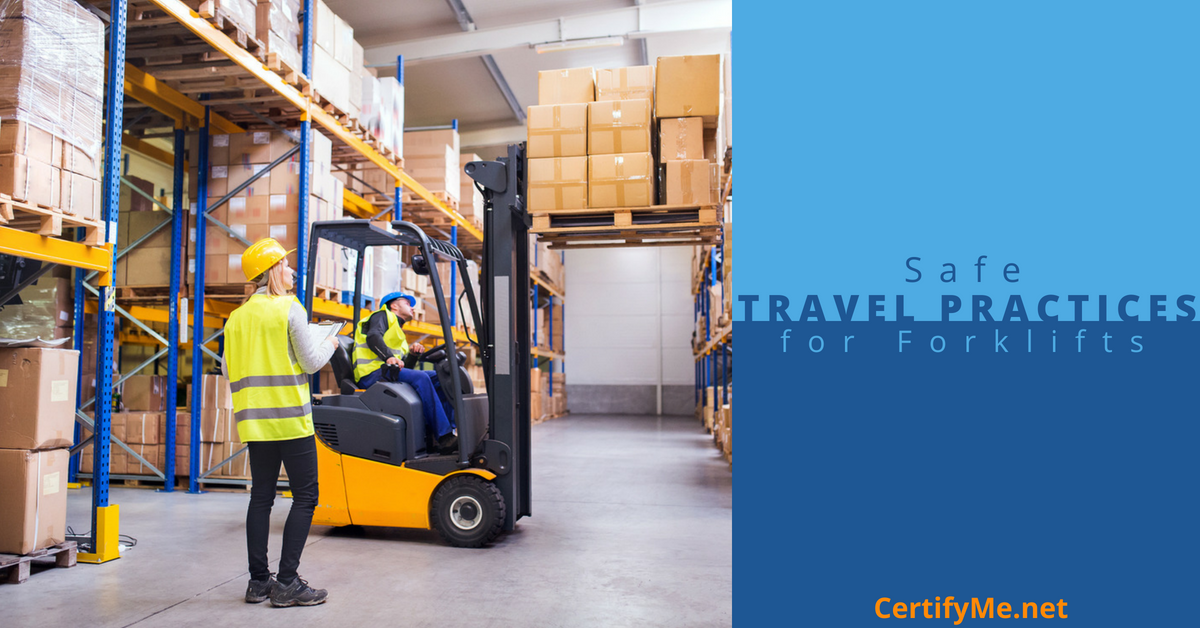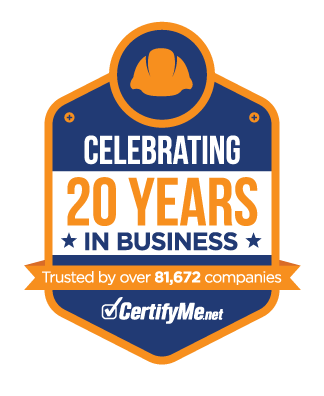Why Safe Forklift Practices Matter
Posted by: admin on March 5, 2025

Preventing workplace accidents starts with mastering safe forklift practices. Proper training helps operators maintain safe distances, observe lifting protocols, and follow OSHA forklift safety rules. Operating a forklift without understanding these fundamentals increases the risk of accidents. To gain the necessary skills, consider obtaining forklift certification online to ensure compliance and workplace safety.
Safe Distances for Forklift Operations
Maintaining proper spacing between forklifts and pedestrians reduces the likelihood of collisions. OSHA forklift safety rules require operators to ensure clear visibility and maintain safe clearance when maneuvering in tight spaces. A minimum safe distance between forklifts must be observed to allow for sudden stops and prevent accidents.
Safe Practices for Forklift Operators
- Always check your surroundings before moving the forklift to avoid unexpected hazards.
- Maintain at least three truck lengths or 20 feet between forklifts to allow for safe stopping distances.
- Keep visibility clear when operating near blind spots or intersections, and use spotters if necessary.
- Sound the horn at crossaisles and obstructed areas to alert pedestrians and other forklift operators.
- Reduce speed when traveling on slippery or uneven surfaces to maintain stability and control.
- Never carry passengers on a forklift unless specifically designed for multiple operators.
- Avoid sudden braking or sharp turns that could cause the forklift to tip over.
- Conduct routine inspections to ensure the forklift is appropriately working before each shift.
Forklift Pedestrian Safety Protocols
Pedestrian zones require additional precautions to prevent accidents. Operators must use visual aids, yield appropriately, and utilize audible alerts in congested areas. It’s important to remember that forklifts and pedestrians often share workspaces, so taking extra precautions is necessary for a safe environment. This shared responsibility is key to maintaining a safe workplace.
Best Practices for Pedestrian Safety
- Clearly mark forklift operating zones with floor markings and signs to keep pedestrian areas separate.
- Yield to pedestrians and never assume they see the forklift; make eye contact when possible.
- Mirrors should be used to improve visibility in areas with limited sightlines and reduce blind spots.
- Ensure forklifts are equipped with functioning horns and warning signals, using them proactively when approaching high-traffic areas.
- Educate workers on pedestrian safety rules, reinforcing proper procedures for staying clear of forklift pathways.
- Enforce strict speed limits in pedestrian-heavy areas to reduce the risk of accidents.
- Designate walkways and barriers to separate forklift lanes from foot traffic whenever possible.
Forklift Operation Best Practices
As a forklift operator, you carry a significant responsibility. You must follow structured steps to safely enter, maneuver, and exit forklifts. Understanding correct lifting techniques reduces the risk of tipping and improves operational efficiency. A well-trained operator ensures safety for themselves and others, demonstrating a high level of accountability and diligence in their role.
Key Operational Guidelines
- Enter the forklift using the handhold and proper footing, ensuring a stable and safe ascent.
- Secure the seatbelt before starting the operation, as failing to do so can lead to serious injury in case of a tip-over.
- Keep the load low and drive at a controlled speed to prevent instability and toppling.
- Never exceed the forklift’s load capacity, as overloading increases the risk of tipping.
- Lower forks completely before exiting the forklift to eliminate tripping hazards and prevent accidental movement.
- Avoid sudden movements such as abrupt stopping or turning, as these can cause a loss of control.
- Keep hands and feet inside the operator compartment while the forklift is in motion to avoid injuries.
- When reversing, always look in the direction of travel and use a spotter in tight spaces.
Shutdown and Parking Procedures
Properly securing a forklift after use is crucial for preventing unauthorized operation and workplace hazards. By parking in designated areas and following safety protocols, you can ensure compliance and reduce the risk of accidental movement or damage, giving you a sense of security and control over your work environment.
Steps for Safe Shutdown
- Park only in approved locations away from pedestrian pathways to prevent obstructions.
- Lower forks completely to the ground to avoid potential tripping hazards or accidental movement.
- Set the parking brake firmly before turning off the forklift to ensure it stays stationary.
- Turn off the forklift and remove the key to prevent unauthorized use or tampering.
- Inspect the forklift for any mechanical issues before leaving the area to ensure it remains in safe operating condition.
- Report any damage or malfunction to a supervisor immediately so necessary repairs can be made before the next shift.
- Store forklifts indoors when possible to protect them from environmental wear and tear, prolonging their operational lifespan.
CertifyMe: Elevate Workplace Safety with Forklift Training
Implementing safe forklift practices leads to a more secure and efficient work environment. Comprehensive training is essential, providing operators with the skills to prevent accidents and enhance safety standards. CertifyMe offers an OSHA-compliant forklift certification program designed for quick and effective learning, ensuring that operators are equipped with the necessary skills to operate forklifts safely.
Completing forklift training improves workplace safety and ensures regulatory compliance, reducing liability for employers. The program covers safety protocols, proper load handling, and emergency response measures. By investing in training, businesses can minimize workplace accidents and maximize efficiency.
Enroll today to improve workplace safety and ensure compliance with forklift safety regulations. The sooner training is completed, the sooner workplaces can operate at peak safety and efficiency.
Welcome to CertifyMe.net
CertifyMe.net has offered online forklift certification since 1999. With Our Convenient online program. your employess can earn their certification in an hour or less.
Browse Online Certifications:
This low-cost program can be compeleted anytime, anywhere!






